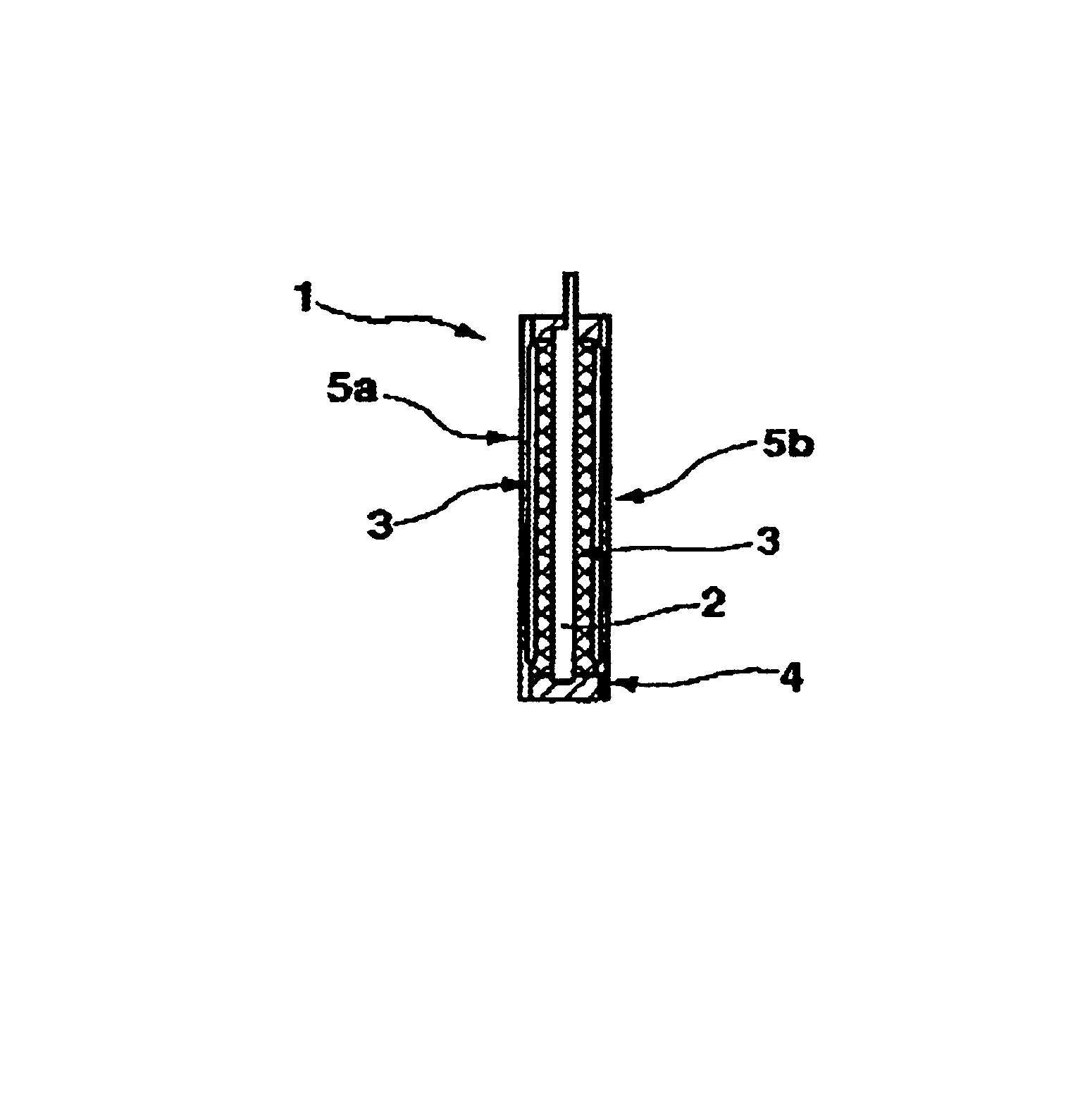Electrode unit for rechargeable electrochemical cells
- Summary
- Abstract
- Description
- Claims
- Application Information
AI Technical Summary
Benefits of technology
Problems solved by technology
Method used
Image
Examples
Embodiment Construction
FIG. 1a, 1b show a partly finished electrode unit comprising a plate-shaped electrode 2 for rechargeable electrochemical cells which gain their energy storage properties from deposition of an element in the form of metal or an alloy. In the assembly situation shown, the electrode 2 is disposed on a spacer 3 mounted on the rear electrode surface (and covered by same) and comprising an electrically insulating frame 4 covering the outer edges of the electrode 2. The spacer 3 is disposed on a porous separator 5a of sheet-like design. In the embodiment shown, the spacer 3 has a foamy structure. In the assembly situations shown in FIGS. 2a and 2b, the front surface of the electrode is provided with a further spacer 3, including frame 4.
In the assembly situation in accordance with FIGS. 3a and 3b, a further sheet-like separator 5b is disposed on the spacer 3 including frame 4, wherein the separators 5a, 5b are connected to one another, e.g. welded, thereby forming a separator 5 designed su...
PUM
 Login to View More
Login to View More Abstract
Description
Claims
Application Information
 Login to View More
Login to View More - R&D
- Intellectual Property
- Life Sciences
- Materials
- Tech Scout
- Unparalleled Data Quality
- Higher Quality Content
- 60% Fewer Hallucinations
Browse by: Latest US Patents, China's latest patents, Technical Efficacy Thesaurus, Application Domain, Technology Topic, Popular Technical Reports.
© 2025 PatSnap. All rights reserved.Legal|Privacy policy|Modern Slavery Act Transparency Statement|Sitemap|About US| Contact US: help@patsnap.com



